The figure shows a book-like object (one side is longer than the other) and four choices of rotation axes, all perpendicular to the face of the object. Rank the choices according to the rotational inertia of the object about the axis, greatest first.
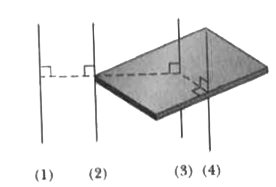
1, 2, 4, 3
Topper's Solved these Questions
- RIGID BODY DYNAMICS - IBOOK - RESNICK AND HALLIDAYCHAPTER - RIGID BODY DYNAMICS - IEXERCISE - PROBLEMS
100 Videos
- RIGID BODY DYNAMICS - IBOOK - RESNICK AND HALLIDAYCHAPTER - RIGID BODY DYNAMICS - IEXERCISE - PRACTICE QUESTIONS (SINGLE CORRECT CHOICE TYPE)
43 Videos
- RIGID BODY DYNAMICS - IBOOK - RESNICK AND HALLIDAYCHAPTER - RIGID BODY DYNAMICS - IEXERCISE - PRACTICE QUESTIONS (INTEGER TYPE))
3 Videos
- RELATIVITYBOOK - RESNICK AND HALLIDAYCHAPTER - RELATIVITYEXERCISE - PRACTICE QUESTIONS (Integer Type)
5 Videos
- RIGID BODY DYNAMICS-IIBOOK - RESNICK AND HALLIDAYCHAPTER - RIGID BODY DYNAMICS-IIEXERCISE - PRACTICE QUESTIONS (Integer Type)
2 Videos
Similar Questions
The figure shows three small spheres that rotate about a vertical axis. The perpendicular distance between the axis and the center of each sphere is given. Rank the three spheres according to their rotational inertia about that axis, greatest first.
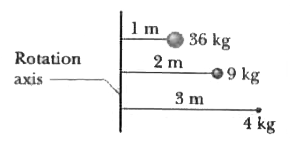
View SolutionA particle is to be placed, in turn, outside four objects each of mass m:(1) a large uniform solid sphere, (2) a large uniform spherical shell,(3) a small uniform solid sphere, and (4) a small uniform shell. In each situation,the distance between the particle and the center of the object is d. Rank the objects according tothe magnitude of the gravitational force they exert on the particle, greatest first.
View Solution
Knowledge Check
Figures show a squre loop of side a rotating about the given axes in a uniform magnetic field such that the field is perpendicular to the axis in both cases.
Angular speed of rotation is both cases being the same,
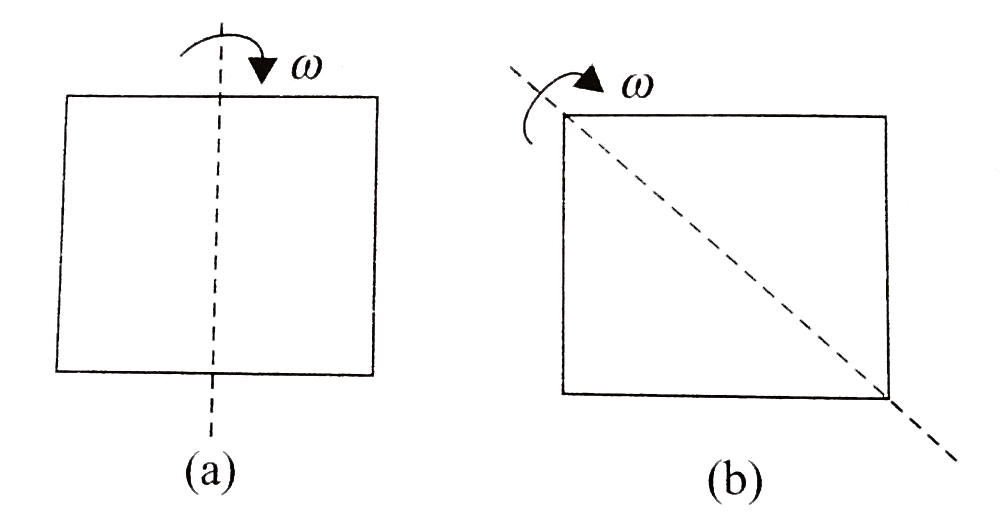 Ainduced emf is more in (a) than in (b)BInduced emf is more in (b) than in (a)CInduced emf in the two cases are equal and non-zeroDinduced emf in the two cases are equal and zero
Ainduced emf is more in (a) than in (b)BInduced emf is more in (b) than in (a)CInduced emf in the two cases are equal and non-zeroDinduced emf in the two cases are equal and zeroThe figure shows four pairs of polarizing sheets, seen face-on. Each pair is mounted in the path of initially unpolarized light. The polarizing direction of each sheet (indicated by the dashed line) is referenced to either a horizontal x -axis or a vertical y axis. Rank the pair according to the fraction of the initial intensity that they pass, greatest first
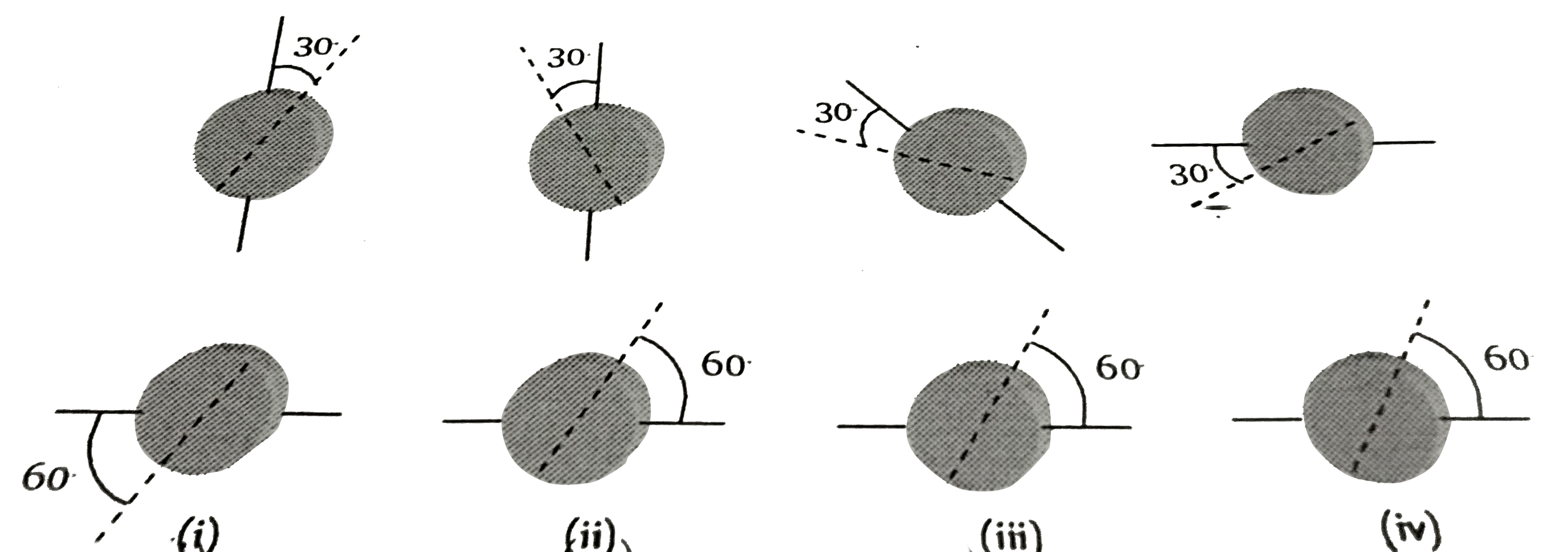 A(i)>(ii)>(iii)>(iv)B(i)>(iv)>(ii)>(iii)C(i)>(iii)>(ii)>(iv)D(iv)>(iii)>(ii)>(i)
A(i)>(ii)>(iii)>(iv)B(i)>(iv)>(ii)>(iii)C(i)>(iii)>(ii)>(iv)D(iv)>(iii)>(ii)>(i)The figure shows four pairs of polarizing sheets, seen face-on. Each pair is mounted in the path of initially unpolarised light. The polarizing direction of each sheet (indicated by the dashed line) is referenced to either a horizontal x-axis or a vertical y axis. Rank the pair according to the fraction of the initial intensity that they pass, greatest first
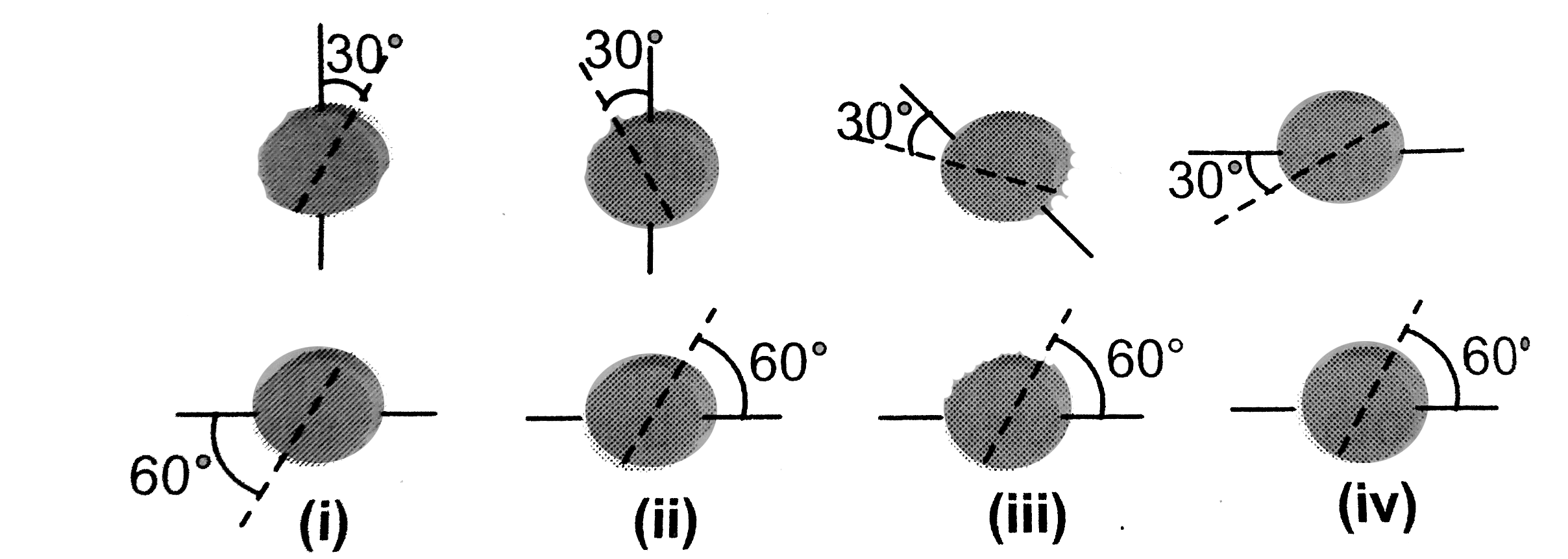 A(a) (i)gt(ii)gt(iii)gt(iv)B(b) (i)gt(iv)gt(ii)gt(iii)C(c) (i)gt(iii)gt(ii)gt(iv)D(d) (iv)gt(iii)gt(ii)gt(i)
A(a) (i)gt(ii)gt(iii)gt(iv)B(b) (i)gt(iv)gt(ii)gt(iii)C(c) (i)gt(iii)gt(ii)gt(iv)D(d) (iv)gt(iii)gt(ii)gt(i)
The figure here shows three equal currents i (two parallel and one antiparallel) and four Amperian loops. Rank the loops according to the magnitude of ∮ along each, greatest first.
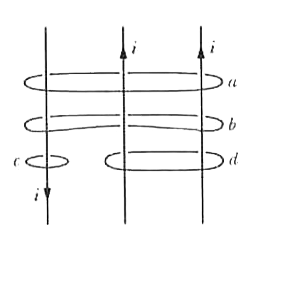
View SolutionThe figure shows the position vector →r of a particle at a certain instant, and four choices for the direction of a force that is to accelerate the particle. All four choices lie in the xy plane. (a) Rank the choices according to the magnitude of the time rate of change (dl/dt) they produce in the angular momentum of the particle about point O, greatest first. (b) Which choice results in a negative rate of change about O?

View SolutionThe figure shows an overhead view of a meter stick that can pivot about the dot at the position marked 20 (for 20 cm). All five forces on the stick are horizontal and have the same magnitude. Rank the forces according to the magnitude of the torque they produce, greatest first.
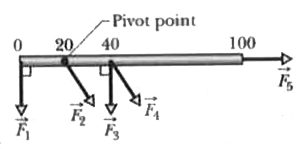
View SolutionThe figure shows the face and interface temperatures of a composite slab consisting of four materials, of identical thickness, through which the heat transfer is steady. Rank the materials according to their thermal conductivities, greatest first.

View SolutionConsider the following four objects:
(i) a hoop
(ii) a flat disk
(iii) a solid sphere
(iv) a hollow sphere
Each of the objects has mass M and radius R. The axis of rotation passes through the center of each object and is perpendicular to the plane of the hoop and the plane of the flat disk. Which object requires the largest torque to give it the same angular acceleration?
View Solution
